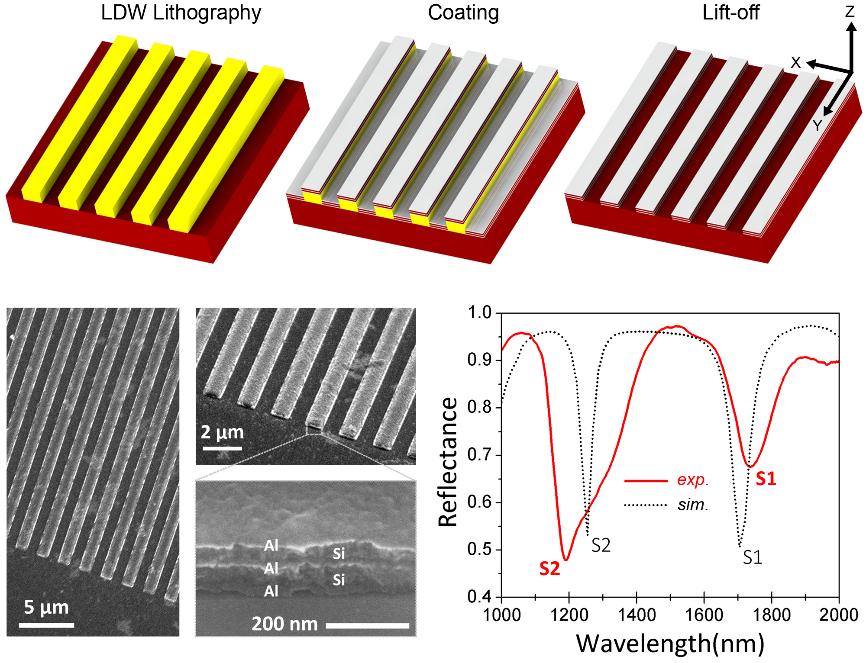Author: |
Light–matter interaction realized by plasmonic microstructures brings about a strong light confinement which means energy can be controlled under micro- or nano-scale, providing a versatile approach to tailor optical properties precisely. However, a large Ohmic loss is inevitable in the plasmonic formations, and usually leads to the thermal instability and low efficiency of designed devices. For common plasmonic nanostructures, it is difficult to have the ability of energy confinement and low Ohmic loss simultaneously.
Recently, a research team led by Prof. Jinsong Gao in the Key Laboratory of Optical System Advanced Manufacturing Technology, Changchun Institute of Optics, Fine Mechanics and Physics, Chinese Academy of Sciences, designed two multilayer nanostructures comprised of five alternate Al and Si layers to discuss the coexistence possibility of both strong energy confinement and low loss. The related research achievements were published in Advanced Optical Materials (DOI: 10.1002/adom.201700496, IF: 6.875). The first author of this paper is Dr. Xiaoyi Liu.
The first structure they demonstrated is the multilayer gratings with a grating constant of 2 μm. It displays dual narrowband peaks in the near-infrared reflectance spectrum because the Fabry-Perot (F-P) resonance can be excited in the waveguide of multilayer grating stripes, resulting in the frequency-sensitivity and linear designable characteristic. The peak wavelengths can be figured out quantitatively through symmetric metal-insulator-metal theory, and these calculated results are accord well with the results obtained by simulations.
The second structure is the multilayer trench gratings containing both stripe and trench parts in it. Besides the F-P resonance, the trench structure can induce the excitation of cavity effect which brings about another kind of modes. When the oblique incidence is adopted, some new modes can be observed, leading to the hybrid plasmonic coupling modes. Additionally, by changing the width of designed grating stripe, the F-P resonance modes successively merge with the cavity effect modes, generating the hybrid modes regularly. The researchers analyzed the phenomenon of hybrid modes by simulations, and verified it through experiments.
Finally, as a contrast, they calculated these two structures’ quality factors to evaluate their losses and qualities. Surprisingly, the latter’s quality factor value is two orders of magnitude higher than the former one. The results imply that the multilayer trench grating structure not only effectively reduces Ohmic loss, but strongly confines incident light energy as well.
This work is supported by the National Natural Science Foundation of China

Figure 1. Fabrication process, SEM images, and experimental/simulated reflectance of the multilayer gratings(Photo by CIOMP)

Figure 2. The SEM image, the simulated reflectance of multilayer trench gratings including some hybrid modes, and the electric field distributions correspond to different mode (Photo by CIOMP)
http://onlinelibrary.wiley.com/doi/10.1002/adom.201700496/full
Contact:
YANG Haigui, yanghg@ciomp.ac.cn
